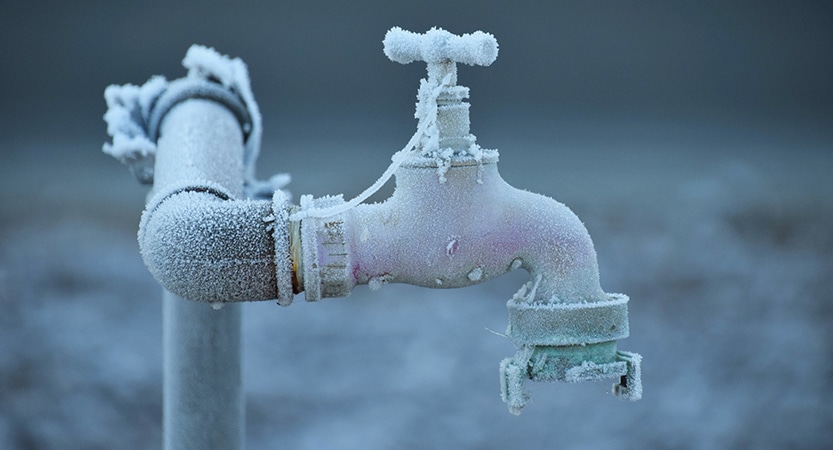Essential Advice for Avoiding Frozen Plumbing in Cold Weather Conditions
Essential Advice for Avoiding Frozen Plumbing in Cold Weather Conditions
Blog Article
The writer is making a number of great points about How to prepare your home plumbing for winter weather as a whole in this content which follows.

Cold weather can damage your plumbing, especially by freezing pipelines. Right here's how to prevent it from taking place and what to do if it does.
Intro
As temperatures drop, the threat of icy pipes boosts, possibly bring about expensive fixings and water damages. Recognizing exactly how to stop frozen pipes is vital for homeowners in cool climates.
Recognizing Frozen Pipes
What triggers pipelines to ice up?
Pipes ice up when revealed to temperature levels below 32 ° F (0 ° C) for extended durations. As water inside the pipes freezes, it increases, putting pressure on the pipe walls and potentially triggering them to rupture.
Risks and damages
Icy pipes can lead to supply of water interruptions, building damage, and pricey fixings. Burst pipelines can flood homes and create extensive architectural damages.
Indications of Frozen Pipeline
Recognizing frozen pipes early can avoid them from rupturing.
Exactly how to recognize icy pipelines
Look for reduced water flow from taps, unusual odors or sounds from pipelines, and visible frost on exposed pipelines.
Prevention Tips
Insulating prone pipes
Cover pipes in insulation sleeves or make use of warm tape to safeguard them from freezing temperatures. Focus on pipelines in unheated or external areas of the home.
Heating methods
Maintain interior rooms appropriately heated, specifically areas with pipes. Open cupboard doors to enable cozy air to distribute around pipes under sinks.
Safeguarding Outside Pipes
Garden pipes and outside faucets
Disconnect and drain garden tubes before wintertime. Mount frost-proof spigots or cover outside faucets with insulated caps.
What to Do If Your Pipes Freeze
Immediate activities to take
If you presume icy pipes, keep taps available to relieve stress as the ice melts. Utilize a hairdryer or towels soaked in hot water to thaw pipelines gradually.
Long-Term Solutions
Structural changes
Take into consideration rerouting pipelines away from outside walls or unheated locations. Include extra insulation to attics, cellars, and crawl spaces.
Updating insulation
Purchase premium insulation for pipelines, attics, and walls. Appropriate insulation aids maintain consistent temperatures and decreases the risk of icy pipelines.
Conclusion
Protecting against frozen pipes requires aggressive measures and quick responses. By understanding the reasons, indicators, and safety nets, homeowners can secure their pipes throughout winter.
5 Ways to Prevent Frozen Pipes
Drain Outdoor Faucets and Disconnect Hoses
First, close the shut-off valve that controls the flow of water in the pipe to your outdoor faucet. Then, head outside to disconnect and drain your hose and open the outdoor faucet to allow the water to completely drain out of the line. Turn off the faucet when done. Finally, head back to the shut-off valve and drain the remaining water inside the pipe into a bucket or container. Additionally, if you have a home irrigation system, you should consider hiring an expert to clear the system of water each year.
Insulate Pipes
One of the best and most cost-effective methods for preventing frozen water pipes is to wrap your pipes with insulation. This is especially important for areas in your home that aren’t exposed to heat, such as an attic. We suggest using foam sleeves, which can typically be found at your local hardware store.
Keep Heat Running at 65
Your pipes are located inside your walls, and the temperature there is much colder than the rest of the house. To prevent your pipes from freezing, The Insurance Information Institute suggests that you keep your home heated to at least 65 degrees, even when traveling. You may want to invest in smart devices that can keep an eye on the temperature in your home while you’re away.
Leave Water Dripping
Moving water — even a small trickle — can prevent ice from forming inside your pipes. When freezing temps are imminent, start a drip of water from all faucets that serve exposed pipes. Leaving a few faucets running will also help relieve pressure inside the pipes and help prevent a rupture if the water inside freezes.
Open Cupboard Doors
Warm your kitchen and bathroom pipes by opening cupboards and vanities. You should also leave your interior doors ajar to help warm air circulate evenly throughout your home.

I am just very fascinated by 6 Ways to Prevent Frozen Pipes and I really hope you appreciated our blog entry. Be sure to pause to promote this entry if you appreciated it. I am grateful for your time. Please come by our site back soon.
Call Today Report this page